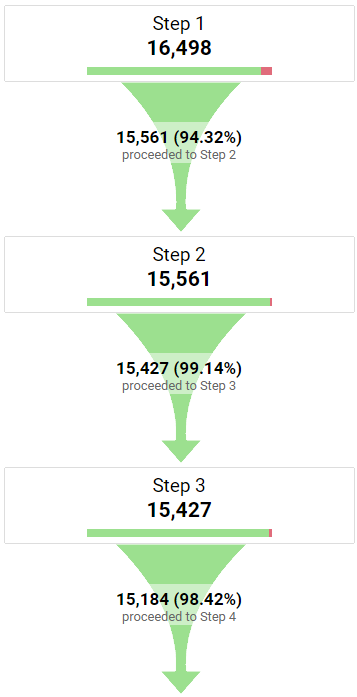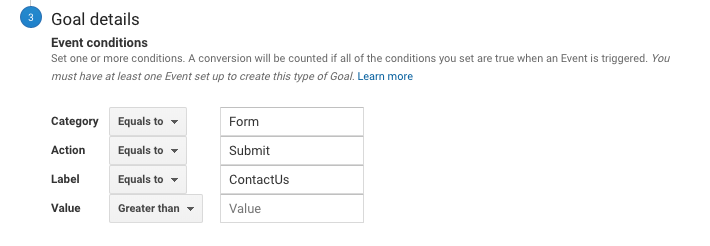Trick Insights on What Data Is Google Analytics Goals Unable to Track
Trick Insights on What Data Is Google Analytics Goals Unable to Track
Blog Article
Discover the Limitations of Google Analytics Goals: Revealing the Information Kind That Remain Untrackable
As services increasingly count on data-driven decision-making, comprehending the limitations of devices like Google Analytics becomes extremely important. While Google Analytics Goals deal useful insights right into individual communications, there exist information types that avoid monitoring, positioning difficulties to a thorough understanding of individual habits.
Insufficient Customer Journey Tracking
Incomplete customer trip tracking within Google Analytics can hinder the ability to properly analyze individual habits. When the customer trip is not fully tracked, there are voids in the information that prevent a comprehensive understanding of just how individuals interact with a web site. This lack of understanding can result in missed out on opportunities for optimization and improvements to the individual experience.
One usual issue with incomplete individual trip monitoring is the lack of ability to see the full path that users take in the past finishing an objective or leaving the website. Without this information, it is testing to determine where individuals may be encountering barriers or rubbing factors that prevent them from converting. Additionally, incomplete monitoring can cover the influence of certain marketing efforts or web site changes on customer actions.
To resolve this restriction, it is important to establish proper tracking mechanisms within Google Analytics to capture the whole user trip. This might include establishing event tracking, objective funnels, or utilizing devices like Google Tag Supervisor to make sure that no vital interactions go unrecorded. By obtaining an extensive view of the customer trip, site proprietors can make more informed decisions to boost individual engagement and drive conversions.
Acknowledgment Difficulties
Navigating with acknowledgment difficulties in Google Analytics calls for a comprehensive understanding of exactly how different touchpoints add to the total conversion process. Attribution challenges emerge from the complexity of modern-day consumer trips, where individuals communicate with multiple channels before converting.
One common attribution challenge is the difficulty in associating conversions to the proper resource, particularly in cases where individuals interact with several channels prior to transforming. Additionally, cross-device monitoring presents an additional attribution challenge, as customers usually switch in between tools throughout their trip, making it testing to track their communications perfectly.
Offline Conversions
Given the obstacles related to connecting conversions properly in online channels, the dimension of offline conversions provides a considerable opportunity for marketing professionals seeking an extra detailed understanding of their consumers' journey. Offline conversions refer to actions that clients absorb the real world, such as making acquisitions in brick-and-mortar shops or over the phone, going to events, or involving with published materials - what data is google analytics goals unable to track. These conversions are vital for organizations that operate both online and offline, official website as they provide beneficial insights right into the performance of advertising projects throughout different touchpoints
Tracking offline conversions generally posed a significant difficulty for marketing professionals, as it was testing to attach these actions back to particular on-line communications properly. However, with innovations in modern technology, such as the integration of CRM systems, distinct identifiers, and discount coupon codes, companies can now bridge the space between online and offline data to get an extra all natural sight of client habits. By successfully measuring offline conversions, marketing experts can optimize their approaches, designate resources more effectively, and eventually enhance the overall customer experience.
Cross-Device Monitoring
Cross-device tracking plays a crucial function in recognizing the interconnected nature of consumers' digital communications throughout numerous tools. In today's omnichannel globe, where users effortlessly switch over between tablets, smartphones, and desktops, tracking their behavior across these tools is essential for marketing professionals to gain an extensive view of their consumer journey.

Additionally, personal privacy concerns and laws such as GDPR and CCPA have further complicated cross-device monitoring. With individuals requiring even more control over their data and boosted restrictions on tracking technologies, online marketers need to locate privacy-compliant and innovative ways to attach individual interactions across gadgets.
Dynamic Web Content Interaction
Comprehending customer interaction with vibrant material is crucial in enhancing digital advertising methods for improved audience communication. Dynamic web content refers to internet site components that transform based upon user habits, preferences, or various other aspects, using a tailored experience. Nonetheless, tracking individual communications with here are the findings vibrant material postures difficulties for standard analytics tools like Google Analytics.
While Google Analytics can track standard interactions like clicks and page views, it may have a hard time to catch even more nuanced engagements within dynamic content. what data is google analytics goals unable to track. Metrics such as time spent on particular dynamic components, float actions, or communications within pop-ups are often not easily measurable using conventional tracking approaches. This limitation prevents marketing experts' ability to totally comprehend how users are involving with vibrant web content and customize their strategies as necessary

Final Thought
To conclude, Google Analytics goals have restrictions in tracking insufficient customer journeys, attributing conversions precisely, catching offline conversions, tracking cross-device interactions, and determining vibrant material engagement. These restrictions highlight the significance of exploring added tracking methods and devices to obtain an extra thorough understanding of user habits and conversions past what Google Analytics can offer.
While Google Analytics Goals offer beneficial insights into user interactions, there exist data types that avoid monitoring, presenting difficulties to a detailed understanding of individual habits.Insufficient user trip tracking within Google Analytics can prevent the capacity to properly examine individual behavior. When the individual trip is not totally tracked, there are voids in the information that avoid an extensive understanding of just how individuals interact with a website.One common problem with insufficient user journey tracking is the lack of ability to see the full path that users take previously finishing a goal or leaving the website. By acquiring a detailed sight of the individual trip, web site owners can make even more enlightened choices to boost individual interaction and drive conversions.
Report this page